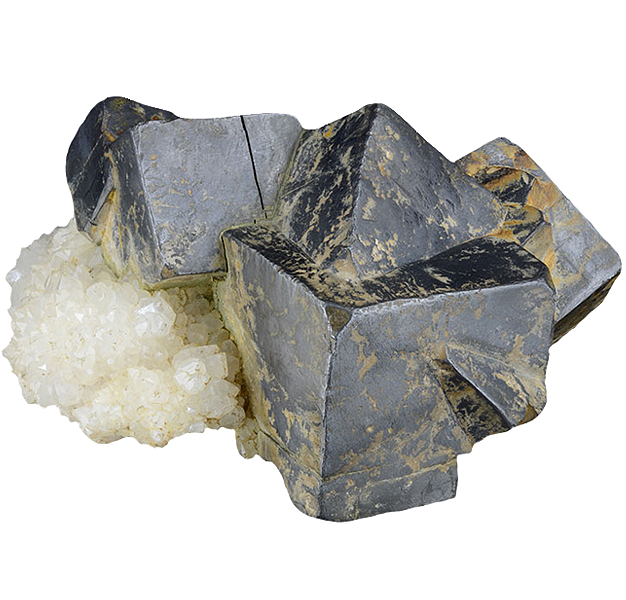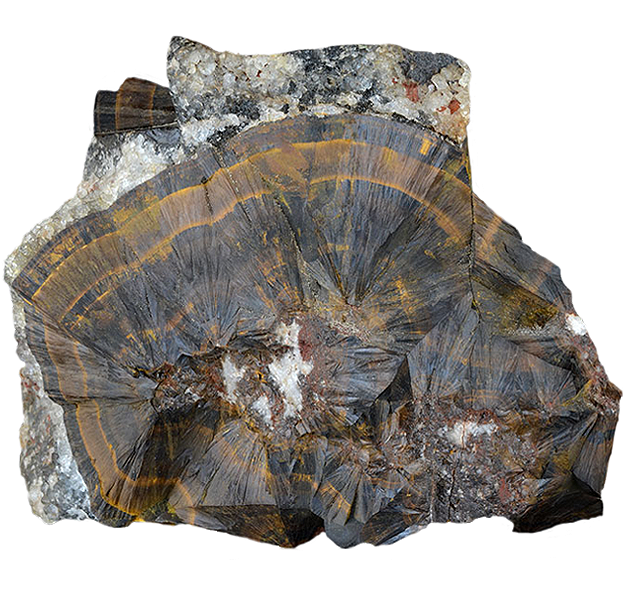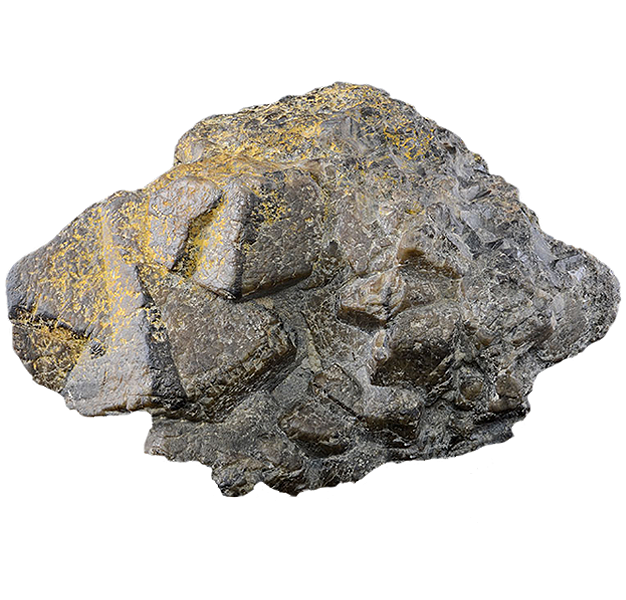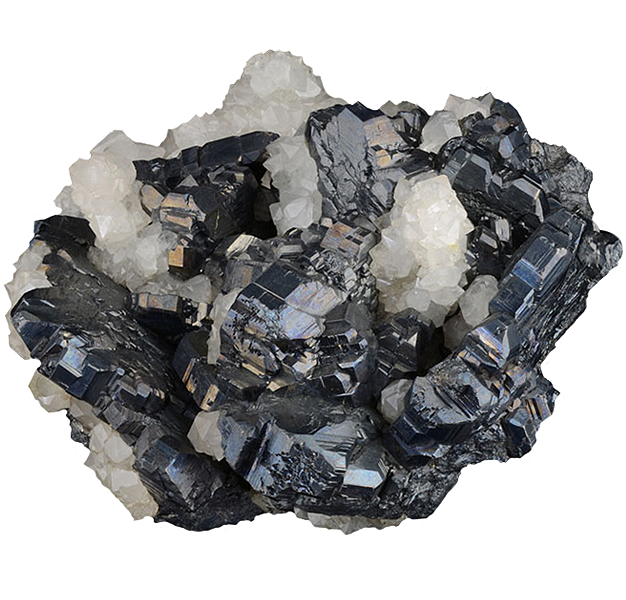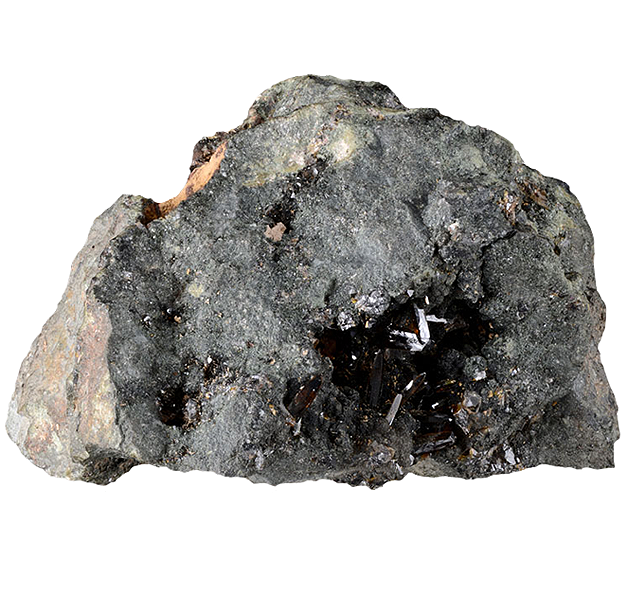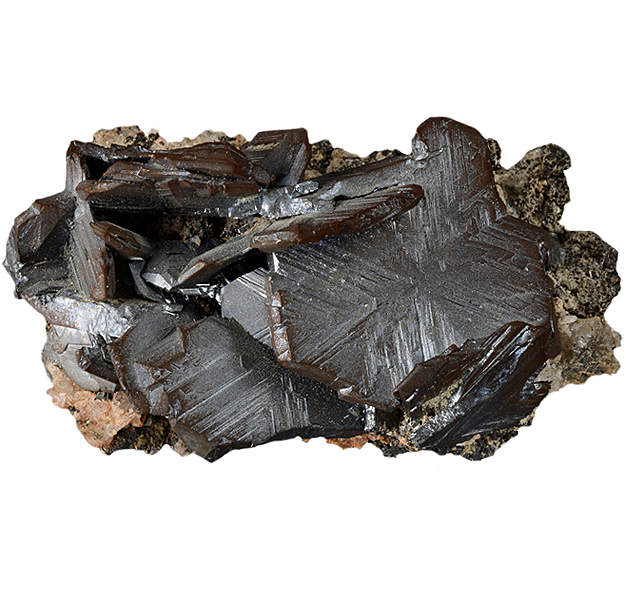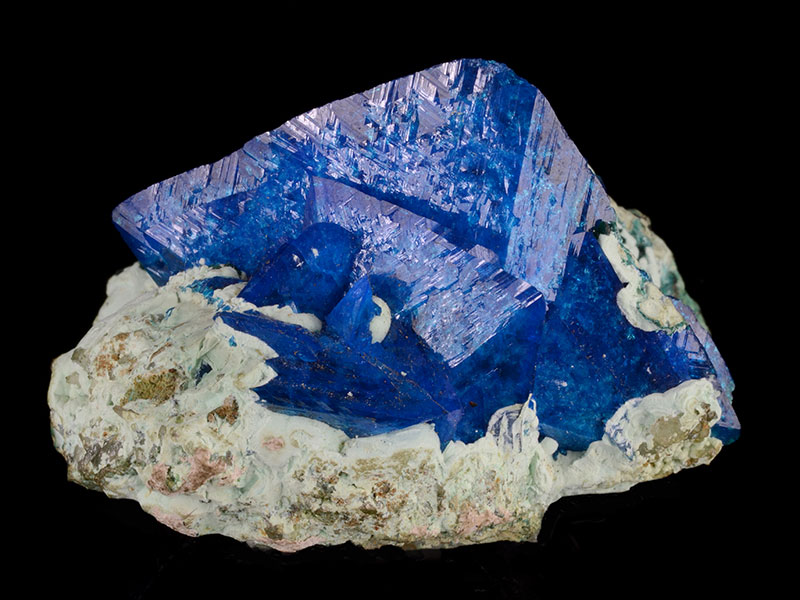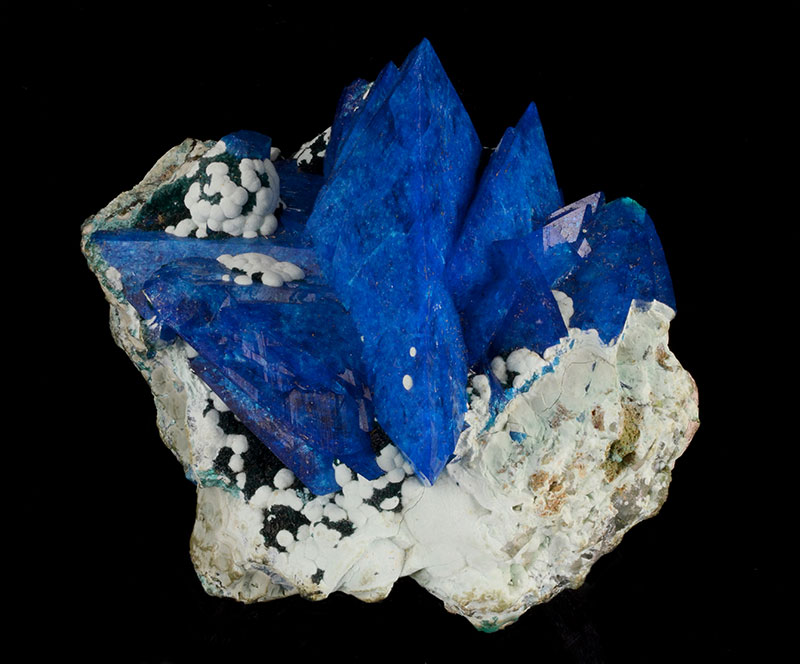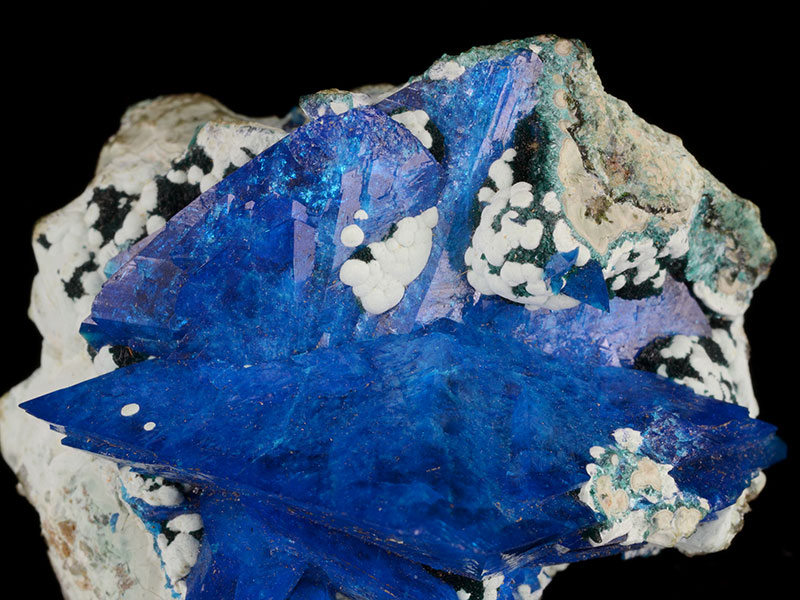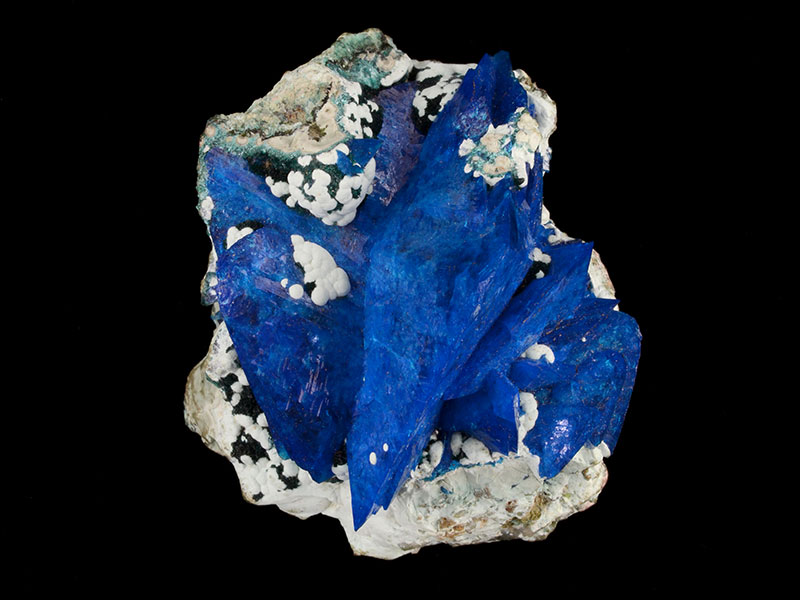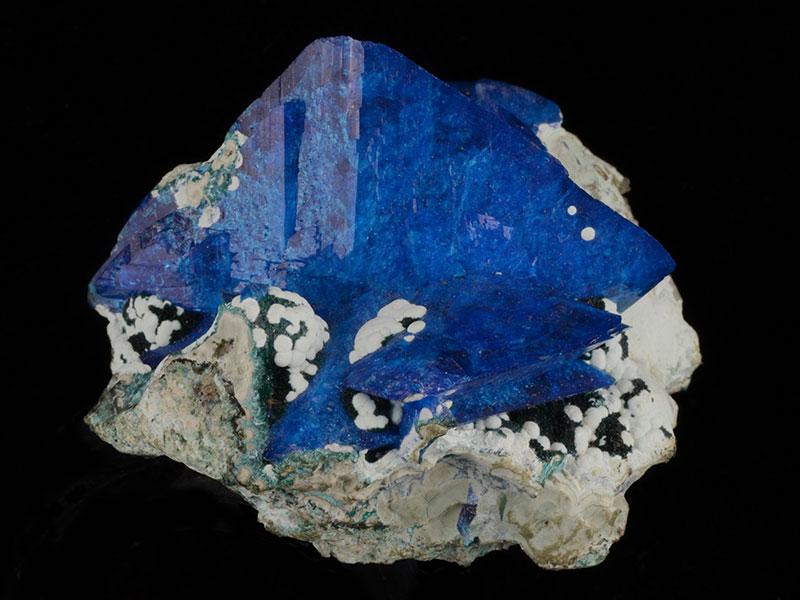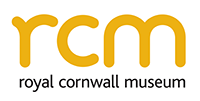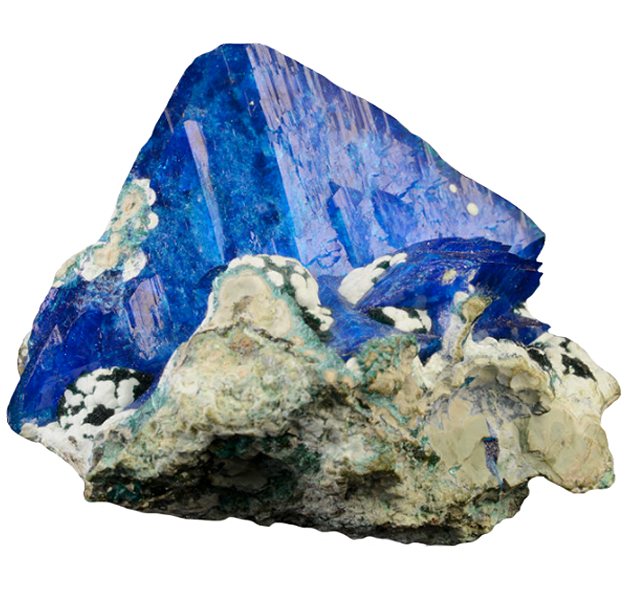
Fact sheet
Liroconite is a rare mineral containing copper, arsenic and aluminium, and is highly valued by collectors. The locality where liroconite was first identified (its type locality) is Wheal Gorland. This specimen shows the largest and finest crystal known from any locality worldwide. It was found at Wheal Gorland in 1808 and acquired by local gentleman-collector Philip Rashleigh shortly before he died in 1811. His entry in the manuscript catalogue of his collection reads:
"1114 A crystal of copper ore in a double four sided pyramid of a transparent blue colour, the largest edge of the crystal 9/10th of an inch, the largest yet seen perfect. Wheal Gorland, r r r"
Rashleigh used the letter ‘r’ to indicate how rare a specimen was - the greater the number of ‘r’s the rarer the specimen.
Chemical Formula: Cu2Al(AsO4)(OH)4•4H2O
Specimen no. TRURI: 1903.1.697
Location: Wheal Gorland
Grid Reference: SW 730 427
Mindat http://www.mindat.org/min-2413.html
This Collection focuses on Cornwall and West Devon’s mineralogical and mining heritage. The specimens it features are drawn from the collection of the Royal Institution of Cornwall (RIC) held at the Royal Cornwall Museum (RCM).
This collaborative project involving the RCM, the Cornish Mining World Heritage Site and The Open University explores how access to the RIC’s mineral collection and the stories it can tell can be widened using digital technology. It includes radioactive minerals from Cornwall that would otherwise be inaccessible to the public for health and safety reasons.
Sample details
More from this collection
